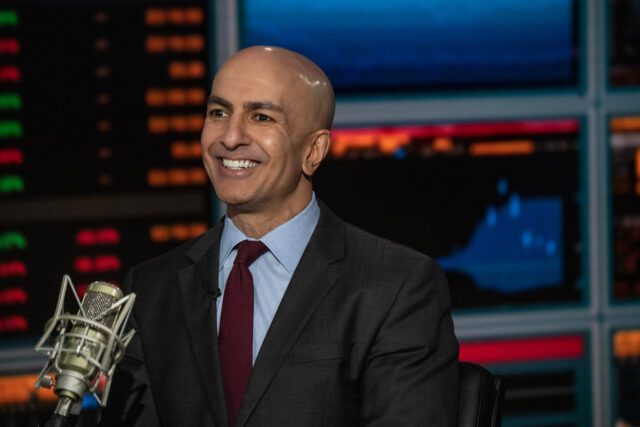Fed President Kashkari Warns Rates Might Not Be High Enough
 Victor J. Blue/Bloomberg via Getty Images
Victor J. Blue/Bloomberg via Getty Images
The Fed's interest rate target might not be high enough to contain inflation, Federal Reserve Bank of Minneapolis President Neel Kashkara warned on Tuesday.
Kashkari argues in an essay published on the Minnesota Fed's website that the strength of the labor market and the resilience of the housing market may be indicating that interest rates need to be higher than Fed officials think.
“The FOMC has undeniably tightened policy meaningfully, both relative to the pre-pandemic period and to some prior tightening cycles. Nonetheless, it is hard for me to explain the robust economic activity that has persisted during this cycle,” Kashakri writes.
Fed chair Jerome Powell and other U.S. central bankers have said they believe that the stance of monetary policy is currently restrictive—meaning, it is holding back economic activity—enough to bring down inflation. The Fed raised its benchmark federal funds interest rate target from a range of zero to 0.25 percent to five to 5.25 percent between March of 2022 and July of 2023, the fastest hiking cycle in decades.
Kashari says that the strength of certain parts of the economy, particularly housing, suggests that the neutral rate of interest—the rate that is neither holding back or pumping up the economy—may be higher than Fed officials think. As a result, current interest rates would not be as much above neutral as thought—and therefore not as restrictive.
“Given that housing is a key channel through which monetary policy affects the economy, its resilience raises questions about whether policymakers and the market are misperceiving neutral, at least in the near term,” Kashkari writes.
The implication would be that interest rates might need to climb higher in order to bring inflation down to the Fed's two percent target.
Kashkari points out that while some areas of the economy show evidence of drag from higher interest rates, overall economic activity has show, “remarkable strength.” Economic growth has been robust nad unemployment has remained very low.
“While the most recent headline GDP appears somewhat weaker than prior quarters, that slowdown was driven largely by inventories and net exports. Underlying domestic demand remained strong,” Kaskari writes.
There are several signs that financial conditions are tight, Kashkari notes. These include the inversion of the yield curve, now 20 months old, and historical comparisons. As well, delinquencies in autoloans and credit cards suggest some strain on U.S. consumers from high interest rates.
The strength of the housing market, which is one of the most important channels for conveying monetary policy to the real economy, points in the other direction, Kaskkari writes. The housing market may be being supported by a combination of a shortage of houses in the aftermath of the housing bubble, a huge influx of migrants needing housing, and remote work increasing demand for houses.
Even if some of those factors prove transitory, it could mean that at least for now, the neutral rate of interest may be higher, Kaskari argues.
Kashkari said he raised his forecast for longer-run neutral rate from two percent to 2.5 percent. Kashkari is not a voting member of the FOMC this year.
Source link

